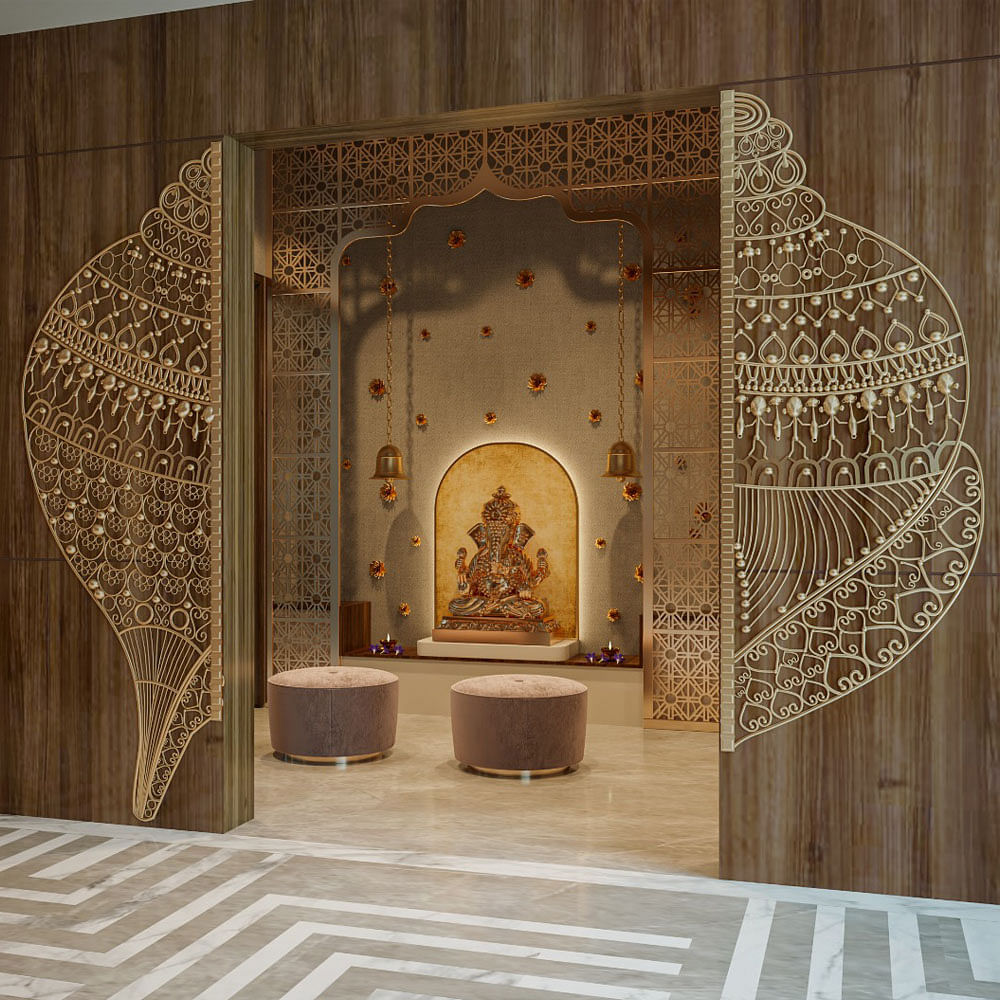A pooja room is an integral part of most Indian homes. Not only does it add a serene look to a home, but also provides a peaceful space (that, at this point, is something we all need) in whatever size or scale. Since it is an emotionally charged space for most, people take great interest in its design. From very traditional to contemporary, and a mix of the two, there are many design options for a prayer room.
We spoke to Meenu Agarwal, the founder & Principal Interior Designer at MADS Creations, to get you the most accurate information possible. MADS Creations is a Luxury Interior Design Company offering custom furniture for high-end residences and has been featured on Architectural Digest for her expertise. So keep reading on how to create an ace pooja room in your home.


